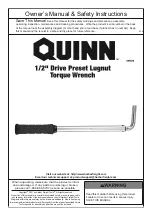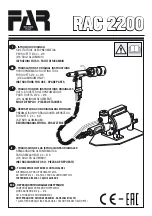
8
If you have clamped the object very tightly, you must exert similar
pressure on the foot pedal before it will release.
Warning: Ensure you are supporting the workpiece to avoid
its falling when the jaw is released.
3. Slide the moving jaw back and remove your workpiece. (See Fig. N)
CLAMPING ON ONE SIDE OF THE JAW
Sometimes, large or awkward workpieces can only be clamped
on one side of the jaws. In this case, be sure to avoid excessive
clamping force.
CLAMPING SQUARE PIECES VERTICALLY (See Fig.O)
Sometimes, tubing or other square (steel, aluminum or other)
workpieces need to be clamped vertically on the center of the
jaws. The hole on the base plate under the jaw accommodates
pieces up to 6cm in width.
CLAMPING LARGE OBJECTS [450mm TO 940mm]
The move jaw can be reversed to accommodate large workpieces.
1. Set the Lock / Release Switch (13) to the “release” position and
ensure that the Foot Pedal (9) is released.
2. Slide the Moving Jaw (1) fully from its tracks. (See Fig. N)
3. Rotate the jaw 180 degrees and re-insert it into the track.
(See Fig. P)
Warning: Whenever clamping objects with the moving jaw
reversed, ensure the workpiece sits down onto the sliding jaw,
and is parallel to it. Avoid clamping workpieces at the top of
the jaws (with a gap between the workpiece and the base of
the moving jaw) as excessive pedal pressure could damage the
unit.
5
6
7
N
M
R
Q
P
O
H
G
L
K
J
I






























